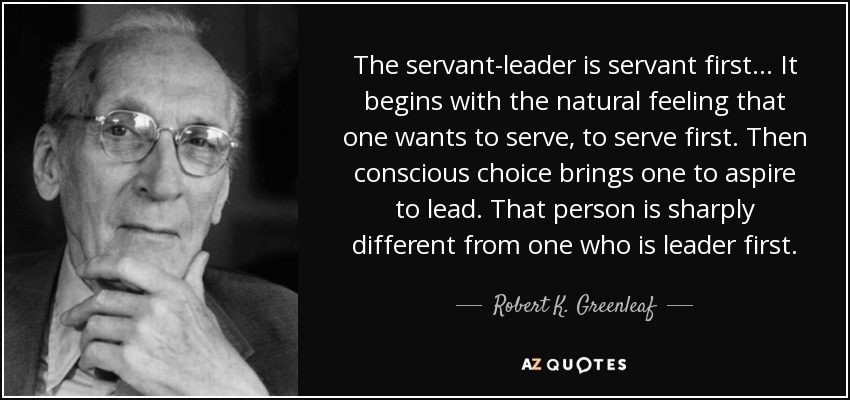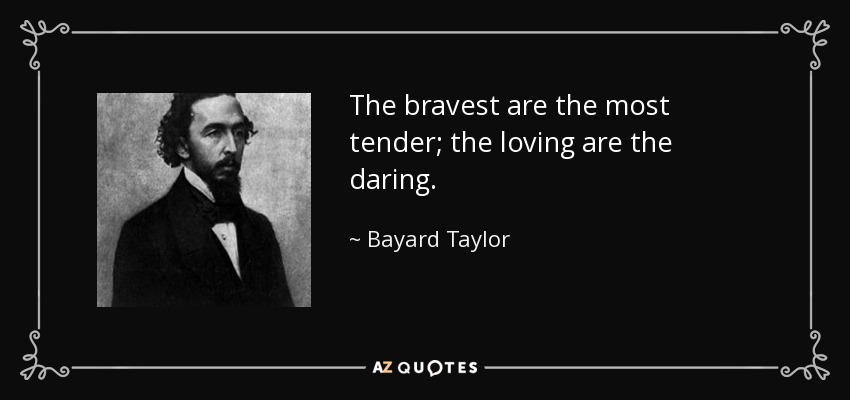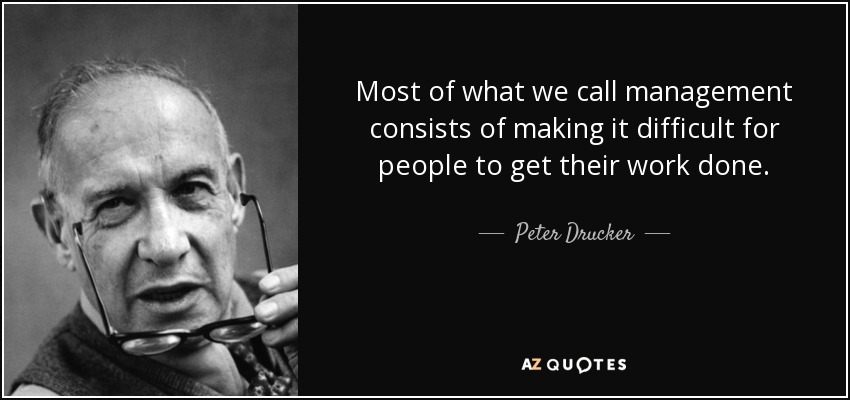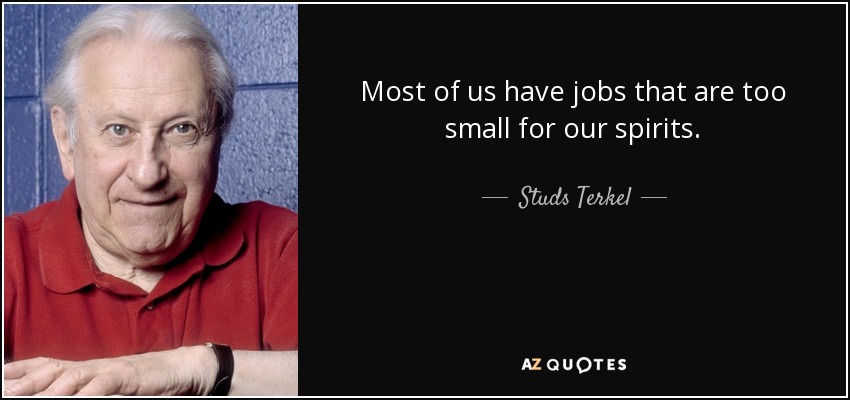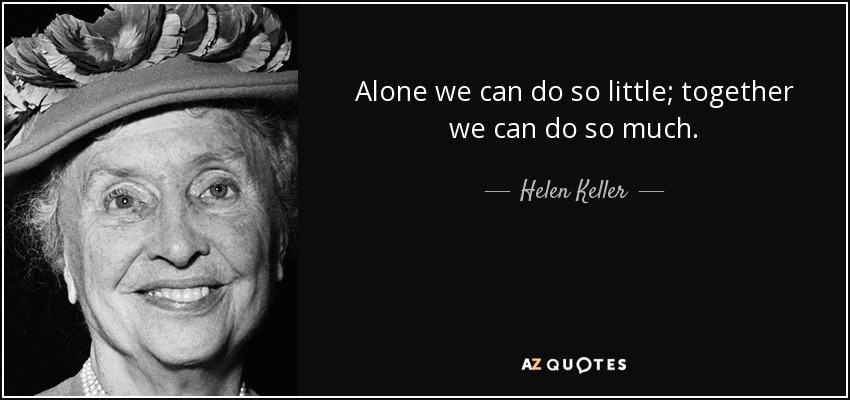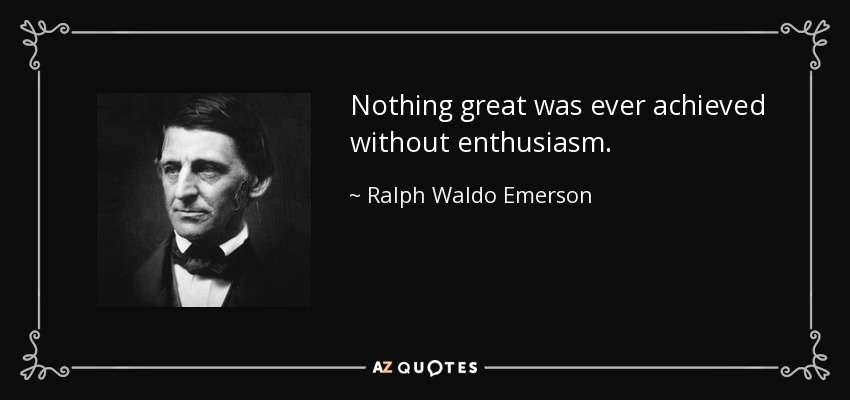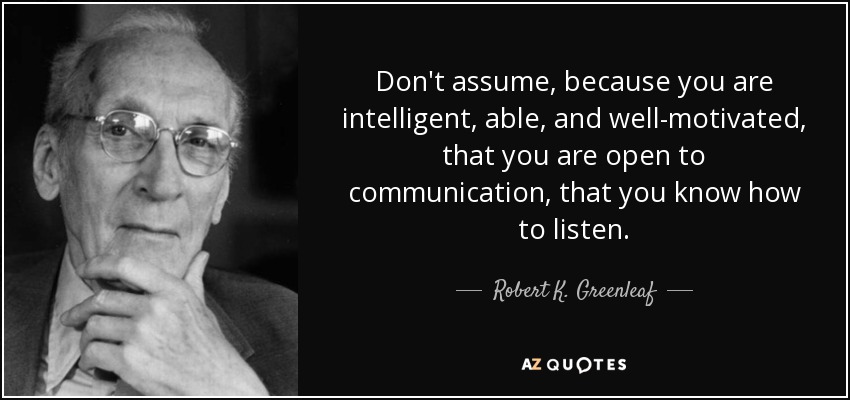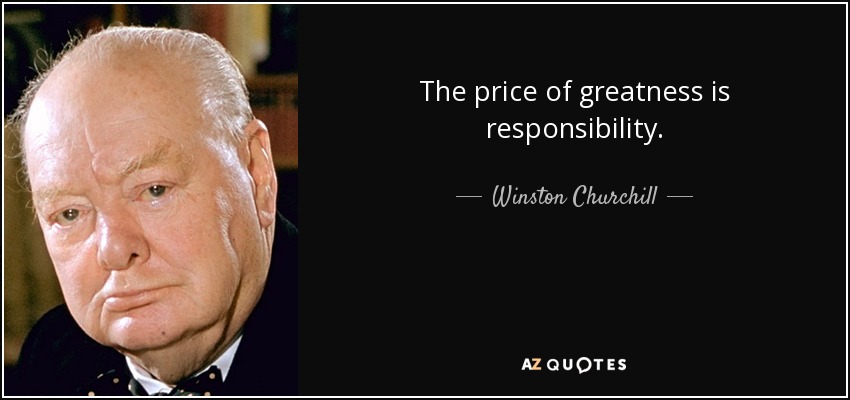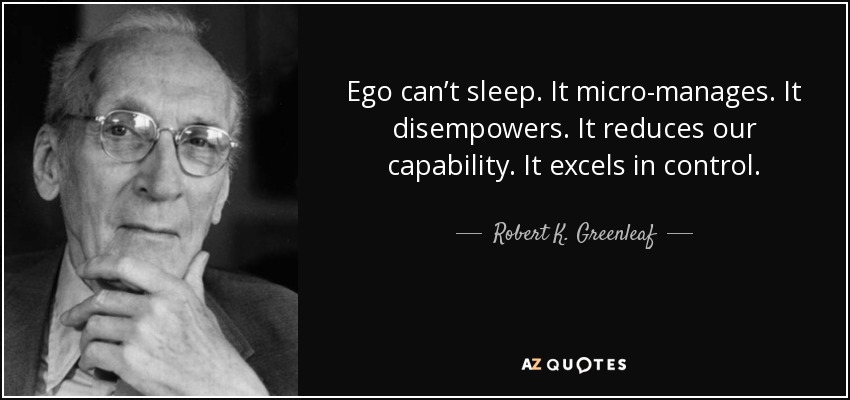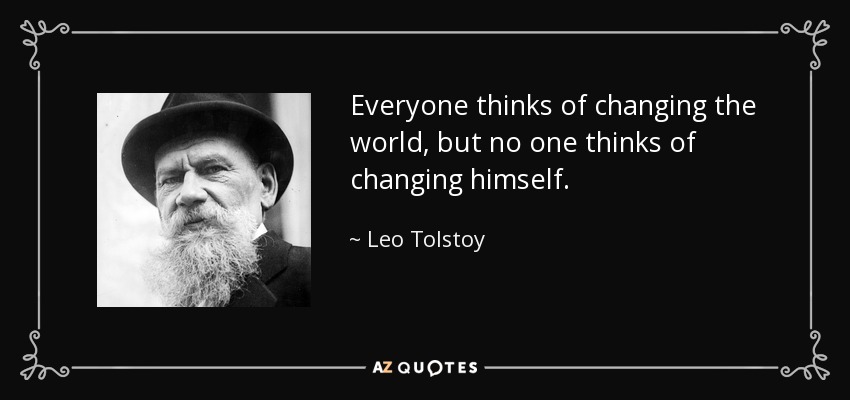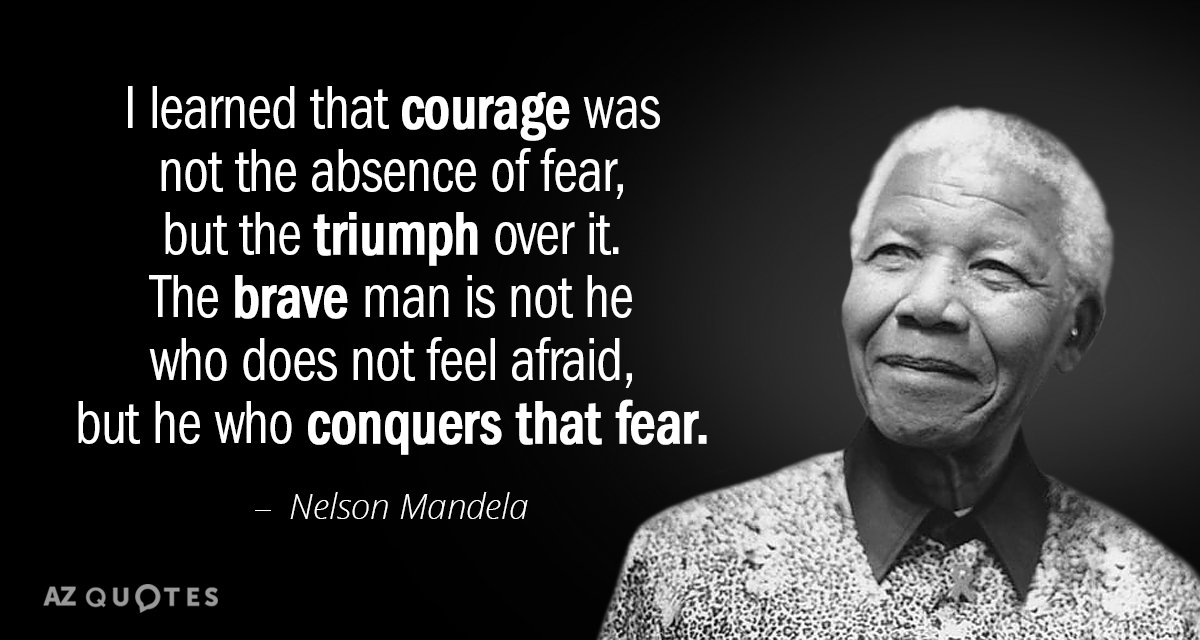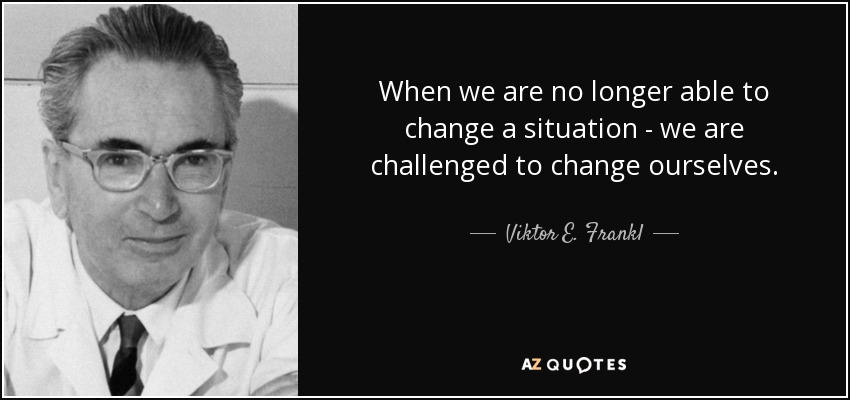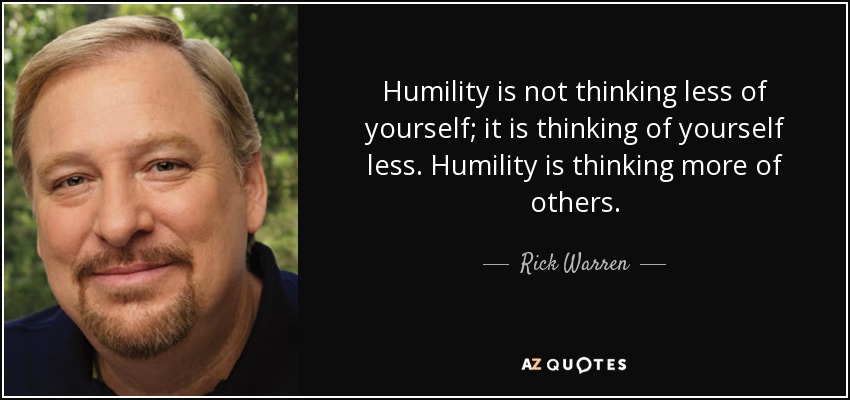Click here to return to Blog Post intro
PART ONE: HOW TO DRIVE SUPERIOR RESULTS
Whom Will We Serve?
DARE-TO-SERVE REFLECTION #1
How do you think about the people you lead? Are they a “pain in the neck” or essential to the future success of the organization?
In leadership, your attitude is your altitude. When Bachelder joined Popeyes, the place needed an attitude adjustment. The problem? The people we were responsible for leading were viewed as “a pain in the neck.” The franchise owners were “difficult.” The restaurant teams were “poor performers.” The guests were “impossible to please.” The board members were “challenging.” The investors were “not on our side.” The first step in turning around your organization’s performance? Think positively about the people you lead.
DARE-TO-SERVE REFLECTION #2
Think about difficult leaders you have worked for. Have you made a conscious decision to lead differently than “them”?
We wanted to be leaders who served well the people, brand, and organization we had been given. We didn’t want to fall prey to the self-focused leadership style we had observed in others. Our belief was that serving people well would generate better business results.
DARE-TO-SERVE REFLECTION #3
Who are the most important people you serve—the owner, the boss, the customer, the employees? Which one is your primary focus?
Our purpose: to inspire servant leaders to achieve superior results. Our principles: six behaviors we saw as essential to serving the people well and delivering superior performance—passion, listening, planning, coaching, accountability, and humility.
Dare-to-Serve leaders begin by intentionally deciding on their attitude and leadership approach.
- Decide to think positively about the people you lead.
- Decide to be a leader who serves others over self-interest.
DARE-TO-SERVE REFLECTION #4
What are the specific qualities you love in the people you lead?
It takes about 60,000 team members to run the more than 2,600 restaurants around the globe. At Popeyes, we chose to serve the franchise owners well as our first priority.
Interestingly, unresolved conflict with franchise owners never leads to operational excellence or superior sales and profit performance. Instead, franchise systems with high internal conflict have negative business results.
We had more than three hundred franchise owners at Popeyes—and loved them all. These were hardworking people who took bold risks to grow Popeyes and to serve our guests well. They are inspiring people, people to be admired. They deserve to be loved. They deserve to be served.
Here’s a tough question. Do you love the people you’ve decided to serve?
Even leaders who say they want to be Dare-to-Serve leaders have this question in their own head: What’s in it for me? How will I benefit? Here are the five benefits to you of becoming a Dare-to-Serve leader.
- People will tell you the stuff you need to know.
- People will be more likely to follow your bold vision.
- People will actually do the stuff you need to get done without a lot of reminding.
- People will perform better. Self-centered leaders create anxious, unsafe work environments where people see no apparent benefit in taking risks or growing in capability. If you serve the people well, you will provide a safe environment focused on personal growth, promotion opportunities, and the fun of “winning” together.
- People will watch out for you and protect you from yourself.
If you and your team commit to becoming Dare-to-Serve leaders, certain mind-sets will trip you up on a regular basis.
- “But I am right.” It is difficult to stay in a mind-set of serving others when they do not agree with you. Your first inclination is to think, “But I am right, and they are wrong.”
- “What’s wrong with these followers?” Influencing and persuading others is ultimately more effective than exercising authority over them.
- “We wish they trusted us.” To measure how well we kept our promise to serve the franchise owners, we conducted a survey every summer to get feedback from them. This was our report card on how we served our most important customer.
DARE-TO-SERVE REFLECTION #5
How do you gain meaningful feedback from those you serve?
Consciously decide whom you will serve. Don’t leave this to chance. At the outset, focus on serving one specific group of people. You will be more intentional in your decisions to serve them well. Dare-to-Serve leadership is a mind-set for approaching every constituent. Bring your team together today—and decide to serve.
What is the Daring Destination?
DARE-TO-SERVE REFLECTION #6
What daring destination have you established for your team and organization? What strategies will ensure the team reaches the destination?
A Dare-to-Serve leader pursues a daring destination for the people and the enterprise. You can’t serve the people well if you don’t have aspirations for the team to be wildly successful.
“Would you tell me, please, which way I ought to go from here?” asked Alice in Lewis Carroll’s Alice’s Adventures in Wonderland. “That depends a good deal on where you want to get to,” said the Cat. “I don’t much care where,” said Alice. “Then it doesn’t matter which way you go,” said the Cat.
Our aspirations for Popeyes were conveyed in a four-part plan—the Roadmap to Results. The four pillars of the plan were build a distinctive brand, run great restaurants, grow restaurant
Focus on the Vital Few
DARE-TO-SERVE REFLECTION #7
What are the few vital things that must be addressed in your organization to drive better performance?
People think focus means saying yes to the thing you’ve got to focus on. But that’s not what it means at all. It means saying no to the hundred other good ideas that there are. You have to pick carefully. I’m actually as proud of the things we haven’t done as the things I have done.
Steve Jobs, Apple Worldwide Developers Conference, May 13-16, 1997
The Dare-to-Serve leader must have the courage to focus on and solve the hard things facing the organization. We cannot serve the people well if we lead them through a long list of activities that don’t change the performance of the organization. Instead, dare to act on the few game-changing initiatives that will deliver superior performance results.
DARE-TO-SERVE REFLECTION #8
Have you committed the resources needed to reach the daring destination?
One of the questions followers have for a leader is, Will you put your money where your mouth is? When a leader commits sufficient resources to reach the daring destination, it conveys conviction, determination, and dedication to the goals. This may be the most important test of your leadership, from the followers’ point of view.
DARE-TO-SERVE REFLECTION #9
What steps have you taken to create a work environment that brings out the best performance from your team?
Dare-to-Serve leaders create work environments that bring out the best in their people.
If you ask the people what constrains their performance, it is usually not skills; it is the work environment established by the leader. The work environment can inspire boldness, innovation, and excellence, or it can strangle the capability and productivity of the people and the team. This is the work of the leader: to create a work environment that yields superior results.
Some remarkably simple lessons in leading high-performance teams:
- Find out the strengths of each team member and assign each to a role that uses those strengths.
- Respect different talents in the team; everyone has something to contribute.
- The leaders can’t create winning results on their own. The team creates the win.
DARE-TO-SERVE REFLECTION #10
What are the milestones and measurements of progress in your organization? Are you acting on what you learn from the data?
Take note: measurements matter only if you plan to act upon what you learn. At Popeyes, leadership is being courageous enough to measure and report performance results—to be accountable. This attention to accountability improves the odds of superior results.
With the courage of the dare—and the humility of the leader—daring destinations serve the people well.
Why Do We Do This Work?
Despite the fact that one in ten Americans currently works in a restaurant, one-third of Americans find their first job in a restaurant, and 50 percent of Americans work in a restaurant at some point in their working lives, restaurant work is regarded with disdain.
Consider this thought: It is the leader’s responsibility to bring purpose and meaning to the work of the organization. When people believe their work matters, they contribute differently.
The purpose of work at Popeyes is to inspire servant leaders to achieve superior results.
Servant leadership simply means service above self. Popeye’s decided to serve others well, and the Popeyes purpose was well received by the people. While they had to spend a fair amount of time explaining servant leadership, people ultimately understood that it simply meant service to others above self.
DARE-TO-SERVE REFLECTION #11
How well do you know the people who work for you? Do you know the three or four events in their lives that have shaped who they are today?
DARE-TO-SERVE REFLECTION #12
If you knew the top-priority values of the people on your team, how would you lead more effectively?
DARE-TO-SERVE REFLECTION #13
Most leaders can tell you the weaknesses of their team members. But can you cite the strengths and talents of your team? Are you accessing their very best capability?
DARE-TO-SERVE REFLECTION #14
What would happen if you helped your team discover and pursue their personal purpose? How would they contribute differently to the performance of the team?
At Popeyes, the leaders who had an action plan for their personal purpose had more impact on the business. A best practice was to have team members bring their personal purpose action plan to their annual and midyear performance reviews. These are good times to review their purpose, encourage them to put it into action, and discuss specific ways to act on the purpose in the upcoming months.
In 2012, a research firm reported that Popeyes’ overall Employee Engagement Index of 78 percent was significantly above the norm of 69 percent for their other client companies. The top 25 percent of Popeyes leaders, those with the highest engagement index scores, excelled at 89 percent!
How Will We Work Together?
The turnaround of a team’s performance or a company’s performance requires a compelling strategic plan—a road map that gives clarity about what the team or company will do to get to the daring destination.
A strategic road map is essential, but it is insufficient to drive superior results. As important as what you decide to do is to decide how you will work together to accomplish the plan. Some call this the culture of the organization, which is a good word for it, because it means the way you think, behave, and work together to accomplish goals.
DARE-TO-SERVE REFLECTION #15
What are the principles of your organization? Are they evident in the daily actions of the team members?
POPEYES PRINCIPLES
Popeyes chose six principles to help the team work together:
1. We are passionate about what we do.
DARE-TO-SERVE REFLECTION #16
How is passion demonstrated in the daily actions of you and your team?
Dare-to-Serve leaders welcome passion to the team. Passion is the fuel of the organization—it drives superior performance.
2. We listen carefully and learn continuously.
DARE-TO-SERVE REFLECTION #17
Are you and your team listening carefully and learning continuously from the people you serve?
What gets in the way of listening and learning? It’s simple. As leaders, we want to think that we have all the answers. Having all the answers makes us feel indispensable to the organization and secure in our jobs. Unfortunately, nothing could be further from the truth. Andy Stanley, the leader of North Point Ministries, says it this way: “The leader’s IQ declines with every promotion.”
3. We are fact-based and planful.
There are abundant current examples of loss of leadership that stems from a failure to foresee what reasonably could have been foreseen, and from failure to act on that knowledge while the leader had freedom to act.
Robert K. Greenleaf, Servant Leadership
DARE-TO-SERVE REFLECTION #18
What process do you have for collecting and analyzing the facts? What process do you have for planning the future?
Planning reduces last-minute decisions. Rushed decisions are often the wrong decisions. The Dare-to-Serve leader gathers the facts needed for decision making and builds a planning process.
4. We coach and develop our people.
To put it simply and starkly: If you don’t get the people process right, you will never fulfill the potential of your business.
Larry Bossidy, Retired CEO of Allied Signal
DARE-TO-SERVE REFLECTION #19
What is your coaching routine? Do you have a specific and thoughtful development plan for each of your team members?
Popeye’s study of servant leadership convinced them that coaching and developing people was a signature trait of a servant leader company, so they encouraged supervisors to have biweekly one-on-one coaching sessions with those who reported to them, to clarify expectations, ask coaching questions, and process decisions in a timely manner. Popeye’s created a compelling leadership development program called Lead from the Heart to invest in team members.
5. We are personally accountable.
DARE-TO-SERVE REFLECTION #20
How do you hold your team accountable and discourage victim mind-sets or blaming others? How does your team hold you personally accountable?
6. We value humility.
DARE-TO-SERVE REFLECTION #21
How do you and your team model humility in your daily actions?
Humility is the toughest principle to talk about and the toughest principle to do. Leaders without humility are hell to work for. They are concerned primarily with themselves. They rarely consider the views or needs of others.
What is the Legacy of the Leader?
Things might have been different, but they could not have been better. J. R. R. Tolkien, Leaf by Niggle
Here’s a summary of the framework used to lead a successful transformation at Popeyes:
1. Listen First. Always listen first.
2. Articulate a Purpose: “WHY”
Simon Sinek’s popular book tells us to “start with why.” And it’s a compelling principle. Knowing why you are doing something is essential to your inspiration and motivation to act.
3. Choose Road Map Strategies: “WHAT”
Decide what needs to be addressed to return the company to a prospering position in the industry. What are the top three to five things that must happen to change the performance trajectory? They should be daring, game-changing ideas, far from the status quo.
4. Determine Principles: “HOW”
Carefully select a half dozen principles that will guide how you accomplish the work ahead.
5. Select and Develop Leaders: “WHO”
Review talent in every area of the organization, looking for the capability you need to execute the strategies and for the character traits you need to live the purpose and principles. Competence is important. Character is even more important. See talent as a full-blown strategy with detailed plans, tools, and systems. Hire a human resource leader with substantial depth of experience in talent management processes. These are not soft skills. These are concrete processes that plan, execute, and track the growth of your leaders.
6. Communicate Consistently & Frequently
Leaders often underestimate the importance of good messaging to every stakeholder—to give clarity to the plan and expectations, to inspire and encourage, and to reassure and calm.
7. Track Results Monthly, Quarterly, Annually
Demonstrate results. Start with crisply stated, concrete goals. Create a dashboard to track progress against the goals.
PART TWO: HOW TO BECOME A DARE-TO-SERVE LEADER
The leader must have both—the courage to take the people to a daring destination and the humility to selflessly serve others on the journey. This dynamic tension between daring and serving creates the conditions for superior performance.
Choose to Serve
Do nothing from selfish ambition or conceit, but in humility count others more significant than yourselves. – Philippians 2:3
I’ve never known a person who didn’t light up at the memory of a truly great boss. And for good reason: great bosses . . . can shape and advance your career in ways you never expected—and sometimes they can even change your life. In stark contrast, a bad boss can just about kill you.
Jack Welch, Winning
DARE-TO-SERVE REFLECTION #22
Who was your best boss? Who was your worst boss? Which one led you to your best performance results? Why?
Bachelder recalls that she worked for two dramatically different kinds of bosses, back-to-back. It was easy to compare them—she worked for the first boss for one year, followed by one year working for the next boss.
- First Boss Initial Meeting: When I came to his office, his words to me were, “I chose you for this role. Your talent is just what we need. I look forward to working with you. This is going to be fun.”
- Second Boss Initial Meeting: “I’ve heard you are good. My job is to trip you up.” Then he grinned, as if that were a funny thing to say. I’ve never forgotten those words. Those words proved to be the second boss’s world-view: Find people’s faults and errors. Make sure that the people know the boss is smarter and better than they are in every respect. Because the boss is “going places” in the company.
Bachelder sums it up this way: “The first boss served the people extremely well, but he was no milquetoast either. He challenged us to pursue bold ideas. The second boss was plenty smart. He challenged us to do his ideas.”
DARE-TO-SERVE REFLECTION #23
How would your daily behaviors be different if you put them through a filter of serving others well?
Robert Greenleaf introduced this concept of the servant leader in the late 1970s: one who leads by putting the well-being of others first. In his writing, Greenleaf concluded that, at the extremes, a leader chooses to be either Leader First or Servant First—a leader who focuses on self-ambition or a leader whose ambition is to serve others. The Leader First motto could be “It’s all about me”: self-focused leadership.
The Servant First motto could well be “It’s all about the people”: others-focused leadership.
DARE-TO-SERVE REFLECTION #24
How do you use the power that comes with your position: for personal gain or for serving the people and the enterprise?
DARE-TO-SERVE REFLECTION #25
What is the most important achievement of your life? Was the win for you or for the people on your team?
DARE-TO-SERVE REFLECTION #26
Do you have big ambitions for yourself or big aspirations for the people on your team?
Ambition is a cultural norm for leadership. Defined by Merriam-Webster as “an ardent desire for rank, fame, or power,” the word comes from the Latin word ambitio, literally “the act of soliciting votes” for political office. In these roots, we find the problem with ambition. Ambition is a problem if it is all about you.
Perhaps a better word is aspiration—for the people we serve. Aspiration is “a strong desire to achieve something high or great.”
Be Bold and Brave
DARE-TO-SERVE REFLECTION #27
How will your daring aspiration for the organization grow the capability and experience of the team?
Apparently, pursuing activities that involve a real chance of death transforms us in a positive way, increasing our courage for risk taking while humbling us as we realize we do not control the outcomes. Dare-to-Serve leadership reflects this same paradox. It requires immense courage and a deeply humble soul at the same time.
DARE-TO-SERVE REFLECTION #28
Think about a bold initiative that you have been a part of. How did it prepare you well for future leadership?
The daring leader helps the people see a future state that is greater than their own imagination and worthy of pursuit.
DARE-TO-SERVE REFLECTION #29
What prevents you from pursuing a daring aspiration for the organization? Do you worry that others may think the plan is crazy? Do you have anxiety that you might fail?
DARE-TO-SERVE REFLECTION #30
What is your daring aspiration for your team that is beyond what they know how to accomplish today?
If you are a bold leader, with big aspirations for the people and the enterprise, bring your courage and confidence, or your ideas will never leave the paper they are written on.
Have Clarity of Purpose
DARE-TO-SERVE REFLECTION #31
Why do you work? Do you have a purpose beyond paying the bills?
Heed this warning: it is much harder to find clarity in your own personal purpose than to help others find theirs.
DARE-TO-SERVE REFLECTION #32
Looking back over your life, what themes reoccur? How can you use those experiences to positively impact your team?
Every life has a theme. Sometimes it takes a long time to discover our theme, but if we pause and look back over time, the pattern presents itself in the stories of our lives. Bachelder reflects, “For me personally, leadership is my life theme. You can hear it in the stories of my life.”
Look back over your life experiences and determine the consistent themes that you see in the time line.
DARE-TO-SERVE REFLECTION #33
How will your top-priority values contribute to the performance of your team and organization? How do you want to be remembered?
Decide which three values you want to be evident to the people at work. Three values that you want others to hold you accountable to. Three values that you will be remembered for on the day you leave the organization.
DARE-TO-SERVE REFLECTION #34
What are your best talents that you can offer to the organization? Are you using those talents in your current role?
A landmark book called Now, Discover Your Strengths, by Marcus Buckingham and Donald O. Clifton, establishes this premise: you have strengths—find them and put them to work to best serve your team and your organization.
A speaker’s words stuck with Bachelder, “You can spend your whole life working on improving your weaknesses, and gain only a fifteen percent improvement.” The speaker continued, saying, “Spend your life applying your strengths, and your contributions will grow exponentially.”
DARE-TO-SERVE REFLECTION #35
When will you set aside time to reach clarity about your personal purpose for serving others?
The Journey to Personal Purpose exercise is available at www.cherylbachelder.com.
The Point of Purpose: It’s not about you. The purpose of your life is far greater than your own personal fulfillment, your peace of mind, or even your happiness. It’s far greater than your family, your career, or even your wildest dreams and ambitions. If you want to know why you were placed on this planet, you must begin with God. You were born by his purpose and for his purpose. – Rick Warren, The Purpose Driven Life
During her tenure as CEO of Popeyes, Bachelder’s personal purpose was “To inspire purpose-driven leaders to exhibit competence and character in all aspects of their lives.” This personal purpose was the filter she used for determining how she spent my time in leadership and work.
DARE-TO-SERVE REFLECTION #36
How could your personal purpose change the trajectory of your life?
Switch from Self to Serve
The first challenge to changing our behavior is accepting this reality: “I’m not inherently good.”
For decades, people have embraced the Twelve Steps of Alcoholics Anonymous as a path to recovery. We can learn from their success. For example, step number 4 is Take a searching and fearless moral inventory of yourself.
Here are eight examples to encourage you to switch from self to serve in your leadership:
- What does it look like to love the people you lead?
- What does it look like to demonstrate courage in your projects?
- How could I help my team member discover and pursue their personal purpose?
- I have this principle of continuous learning. Is it evident to my team?
- Am I coaching my team well?
- What is the implication of my personal purpose on my life?
- How can I demonstrate accountability to my team?
- Do I treat every person with dignity, even in difficult circumstances?
Avoid the Spotlight
You may not switch from self to serve in your actions. It all comes down to what you believe enough to act on. What beliefs do you care about so deeply that they shape your leadership actions? Dare-to-Serve leaders consciously decide to act on these three core beliefs: human dignity, personal responsibility, and humility.
Without dignity, identity is erased.
Laura Hillenbrand, Unbroken
DARE-TO-SERVE REFLECTION #37
Have you committed to treating every person you lead with dignity, even in difficult circumstances? Could the Golden Rule become a core measure of your effectiveness?
A feature of man’s maturity is responsibility towards other people. – Dietrich Bonhoeffer
Every individual, including those having performance difficulties, deserves dignity. They deserve private conversations about the matter, away from public settings. They deserve thoughtful, specific examples to help them understand. They deserve time to absorb the feedback and time to work on personal improvement.
DARE-TO-SERVE REFLECTION #38
Where do you fall on the Accountability Ladder? What are you doing to assume personal responsibility for improving yourself as a leader?
To serve others well, you must look in the mirror—to see your own shortcomings and make the requisite changes in yourself.
Bachelder’s daughter exclaimed, “Mommy, today I learned this verse at vacation bible school: ‘Now that you know these things, you’ll be blessed if you do them’” (John 13:17). Those words ring daily in Bachelder’s ears. Knowing these things is one thing. Doing them is far more difficult. Choose the Dare-to-Serve path and be blessed.
DARE-TO-SERVE REFLECTION #39
Think of a humble leader whom you deeply admire. What qualities do you see in this person that you want to be evident in your leadership?
In Mere Christianity, by C. S. Lewis, he covers the topic of Pride in the chapter entitled: “The Great Sin.” His words: “There is one vice of which no man in the world is free; which everyone in the world loathes when he sees it in someone else; and of which hardly any people . . . ever imagine that they are guilty themselves. . . . There is no fault which makes a man more unpopular, and no fault which we are more unconscious of in ourselves. The vice I am talking of is Pride . . . and the virtue opposite to it . . . is called Humility.”
Isn’t that the truth? We see pride in others, but we struggle mightily to see it in ourselves.
Call to Action
Leaders are made by other leaders, and are made better by other leaders, and go on to make yet more leaders.
Albert Mohler, The Conviction to Lead
DARE-TO-SERVE REFLECTION #40
How will you use the opportunity for influence that you have been given? Will you dare to serve?
If you have five hundred full-time people looking to you for leadership, in the year ahead you have one million hours of influence.
Business leaders are increasingly the stewards of civilization.
Max L. Stackhouse, On Moral Business
Your leadership actions will change lives for the better, leave them unchanged, or, regrettably, leave them worse off. Which will it be? You have some important decisions to make.
The Dare-to-Serve Leader: Cheryl A. Bachelder
Former Chief Executive Officer Popeye’s Louisiana Kitchen, Inc.
Conventional leadership thinking puts the leader in the spotlight. At the other extreme, we think of humble, servant leaders. They shun the spotlight. They listen carefully to the people. They involve the people in decisions. They make decisions that serve the people well.
We conclude that it is the leader in the spotlight who delivers results.
Bachelder’s message is simple, but unconventional. If you move yourself out of the spotlight and dare to serve others, you will deliver superior performance results. This is a different kind of leader, with a rare combination of traits, courageous enough to take the people to a daring destination yet humble enough to selflessly serve others on the journey. This is a Dare-to-Serve leader.
Jim Collins, the author of Good to Great, at a meeting of Yum! Brands leaders presented the findings of his book, describing a new type of top-performing leader: a Level 5 leader. He said that Level 5 leaders are a “paradoxical mix of personal humility and professional will. They are ambitious, to be sure, but ambitious first and foremost for the company, not themselves.” Collins’s work established a case for servant leadership called by another name, the Level 5 leader. It included financial data proving that Level 5 leaders delivered superior performance results.
The world is waiting for leaders to come forward who can steward an organization’s people and resources to superior performance.
Bachelder implores her readers, “May you be inspired to be a Dare-to-Serve leader who drives superior results. And may you spend the rest of your days teaching others to do the same.”


